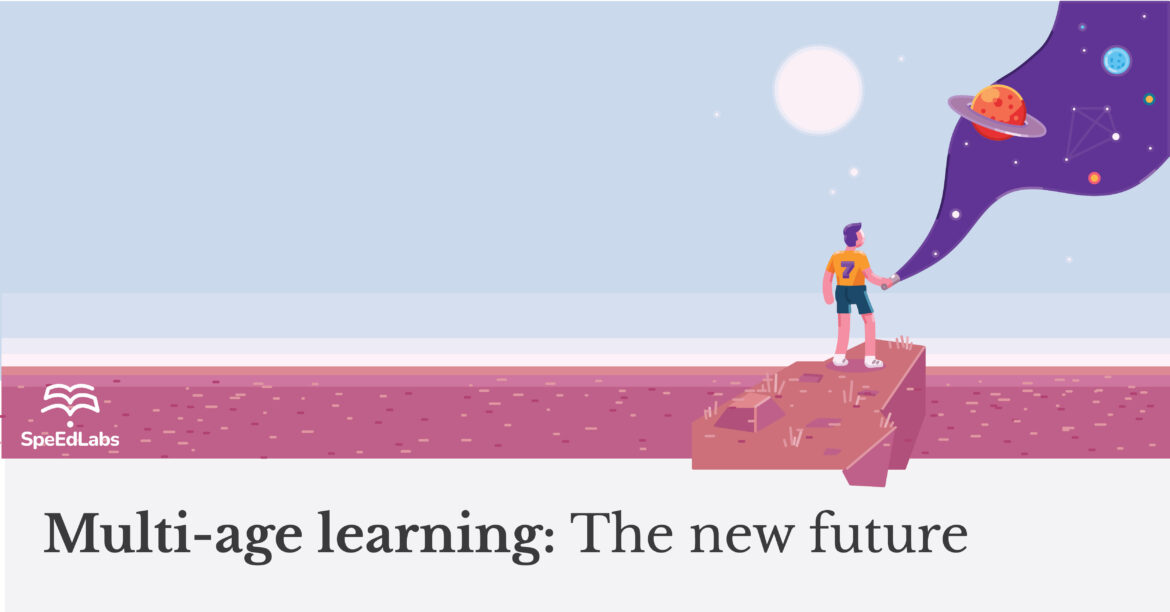The future of education is to make a student’s learning journey more adaptive and collaborative.
A few decades ago, when we talked of learning, one generally drew a picture of a student-teacher relationship confined to a set age group of students, we rarely saw it as a synergy between the multi-age groups, and a common strategy to develop and grow together. Today, this is the new-age approach of learning based on cooperative understanding and is the future of education.
As rightly said by Rudolf Steiner, Austrian philosopher, “Education is a journey, not a race.” More emphasis should be laid on the learning process rather than memorization of the concepts.
Role of Educational Institutes
If looked at properly, multi-age learning is present in every sphere of life be it school, college, library or playgrounds. Learning not only means getting formal education but also the overall development of the individual such as physical, social as well mental development. A student should know that learning isn’t related to dilemmas such as age, sex, caste and religious groups etc. Learning should be made available to all age groups, and educational institutes play a major role as far as implementation of learning is taken into consideration.
Schools, colleges and other vocational-educational institutes should remove the barrier of age limitation when it comes to the delivery of education. Everyone must be given a fair chance to learn so that they can contribute towards the better future of the nation as well as themselves.
What exactly is Multi-age learning?
A purposefully done grouping of students belonging to different age groups to form learning groups can be termed as Multi-age learning. Multi-age learning comprises two or more different age groups in one environment and delivers involvement and collaboration.
“Tell me and I forget.
Teach me and I remember.
Involve me and I learn.”
– Benjamin Franklin
Advantages of Multi-age learning
- It provides independence as well as interdependence in learning
- It contributes towards the building of cross-age relationships
- It encourages collaborative learning
- It helps in developing the social skills of the learners
Multi-age learning: How does it work?
Let’s take an example for the same. Suppose in a class there are people of two different age groups. Let’s take two persons namely Sam (belonging to the age group of 12-15) and Martin (belonging to the age group of 16-20). Now, Martin gets to learn some new skills and, in some time, he becomes a master of the same. Later, Sam approaches Martin to learn that particular skill and Martin also agrees to teach him so this help offered from Martin’s side will result in the following positives:
- The ability to share: Sharing is something that is not only confined to the physical medium, it can be done in other ways as well
- Spread of knowledge: Knowledge can’t be kept confined within four walls. It always spreads when shared with others. A knowledgeable person knows the importance of sharing and they will never keep it unshared
- Leadership skills: Elder students, like in this case Martin will learn how to manage younger peers and solve their problems which will result in the development of leadership skills
- Confidence: Today’s world demands a person who can freely talk with others i.e., an extrovert person. To become an extrovert, confidence is mandatory and, in this case, students belonging to younger age groups (Sam) will acquire confidence by discussing with their seniors. Moreover, they will also learn how to stand up for themselves which will surely help them in the future.
- Mutual Respect: Chances of bullying, teasing becomes negligible when learners develop mutual respect and understanding for each other. They spend time with each other which helps them in developing their social skills as well. Also, multi-age learning teaches students to respect their teachers.
- Personalized learning: In multi-age learning differences between students are not highlighted, thus leading to personalized, stress-free learning.
Key Takeaways
Multi-age learning is important. But, having all the advantages does not mean it is not having any disadvantages. One major demerit of this form of learning is the lack of resources with institutions that are into this form of learning. Another is its implementation in schools/colleges with a heavy population.
But majorly multi-age learning offers advantages and can be a big help in future if done with proper management and organizational plan. It will promote positivity amongst people and can be of help in developing healthier relationships, bonds, and mutual agreements. Overall, it’s a societal boon of the future.
Also published on Medium.
